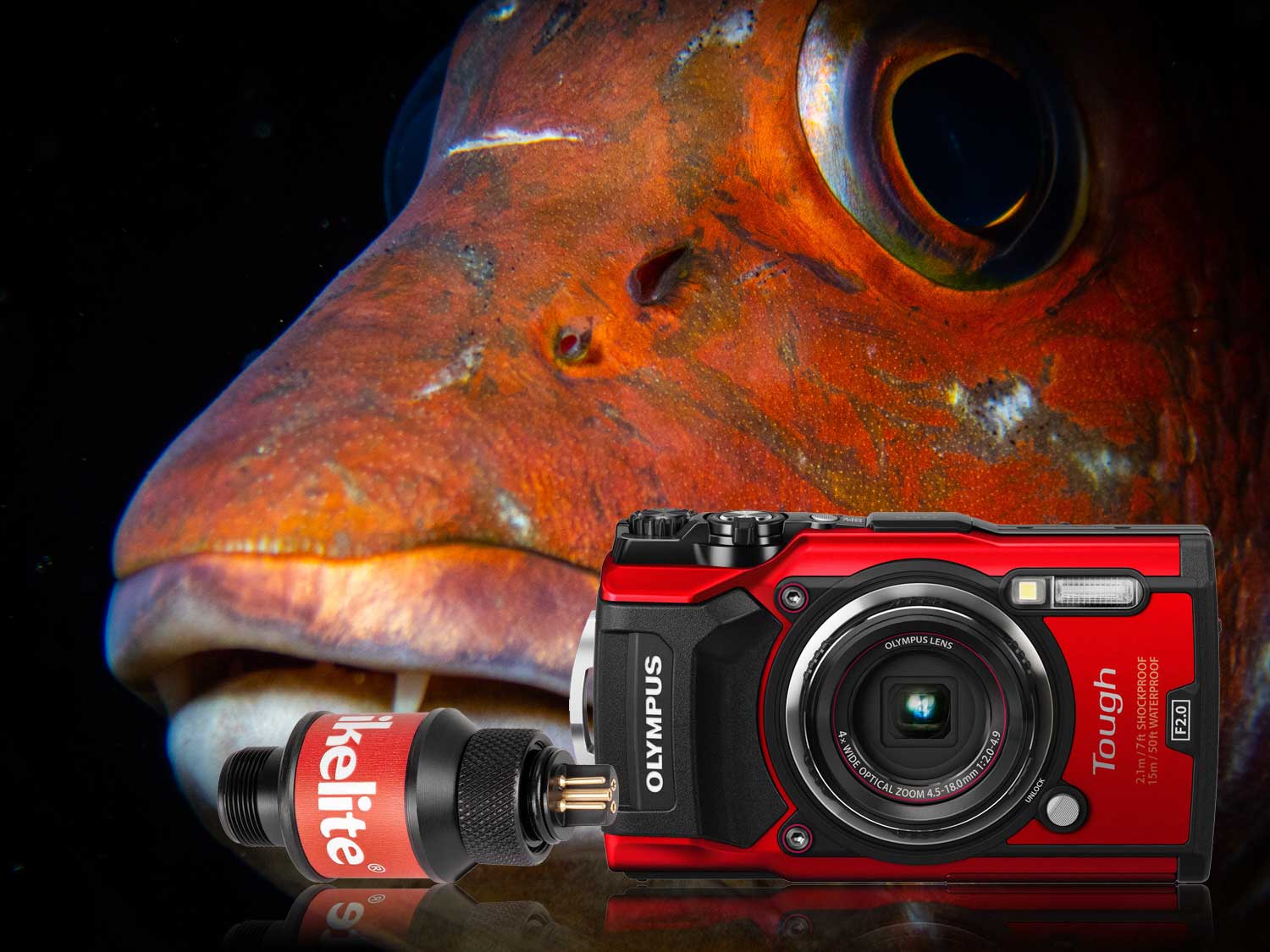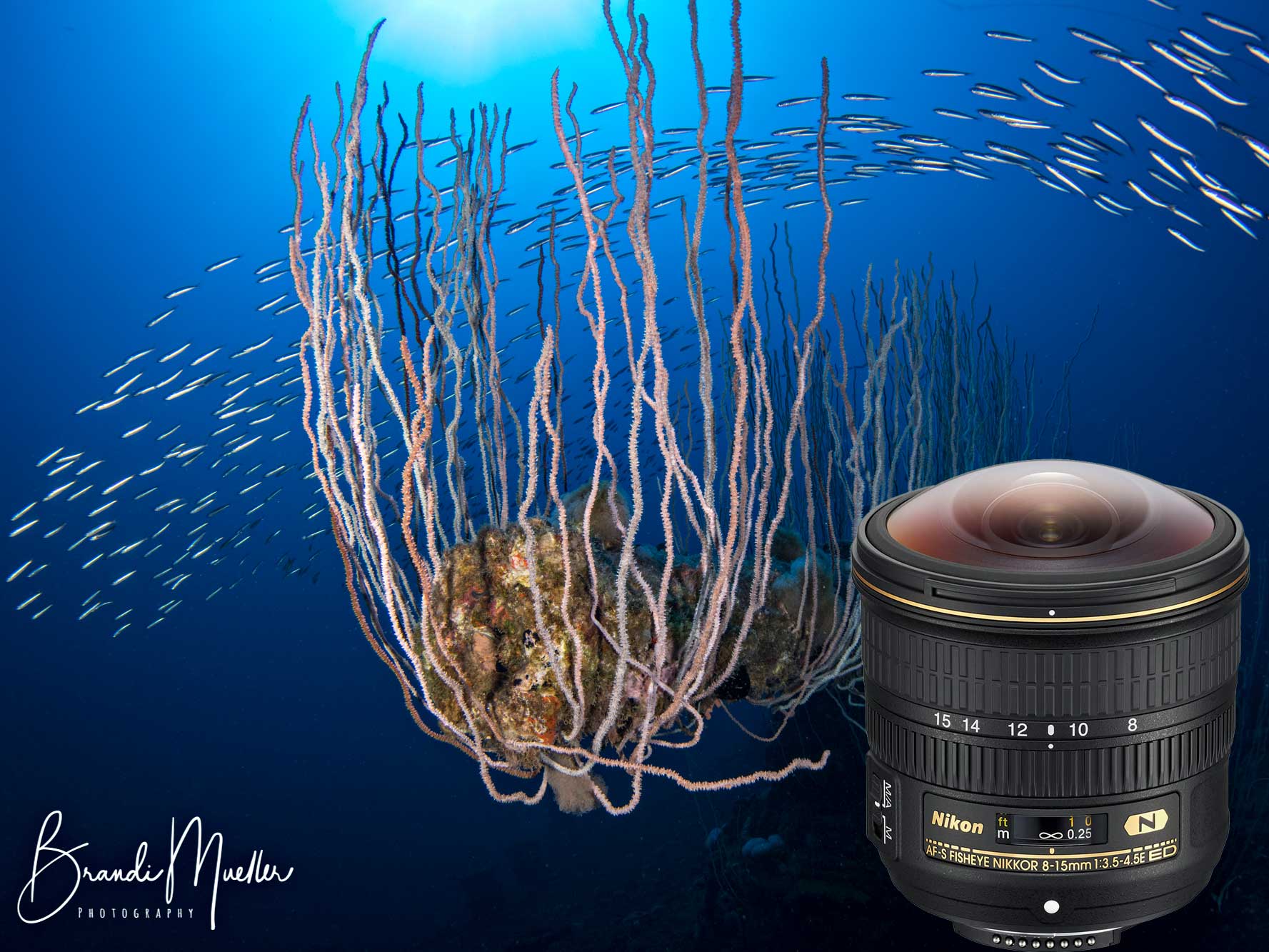The Olympus Tough TG-5 packs some seriously impressive features in a compact and durable camera body. It has the ability to capture RAW 12MP images, shoots 4K video, and has a microscope mode that easily rivals any DSLR or Mirrorless camera at a fraction of the size and cost.
Olympus Tough TG-5 specifications
- 12 megapixel BSI-CMOS sensor
- 4K/30p video capture
- 25-100mm f/2-4.9 lens with dual pane glass to prevent fogging
- Microscope mode
- TruePic VIII processor
- Waterproof to 50 feet (15m)
- Shockproof from 7 feet (2.1m)
- Dust proof
- Built-in GPS and Wi-Fi
- CIPA battery life of 340 shots
- Weighs only 8.82 oz (250 g)
The Olympus TG-5 is a pleasure to use and it's unusual to get this sort of image quality out of a camera that can truly fit into your pocket. The build of the camera makes it perfect for the dive traveler... you never have to worry about taking the camera in or out of the housing, shooting photos on the boat, etc.
Unlike past Olympus waterproof cameras, the TG-5 body is comfortable to hold onto even with larger hands.
The challenge of shooting underwater
Don't be fooled by the relatively small number of megapixels- image quality from the TG-5 is outstanding. Photos are sharp with rich colors and fine detail. The only major drawback is the lack of a manual shooting mode. The camera is programmed to choose the fastest shutter speed and smallest aperture possible without producing an underexposed image.
If the scene lacks ambient light, which is often the case underwater, the camera will choose a large aperture resulting in an extremely shallow depth of field. In the event the camera happens to choose a small desirable aperture it will make up for the lack of light with a slow shutter speed, resulting in motion blur.

A blacked out background is possible when zoomed all the way in to 100mm • ISO 100 • f/14 • 1/100 • 100mm equivalent
RC flash mode
Thankfully, there is a solution that unlocks the camera’s full potential and it lies in the flash setting.
When set to RC (Remote Control) flash mode the camera will still automatically choose aperture and shutter speed, but now it will do so while factoring in a powerful external strobe. With this extra light now part of the equation it is free to choose smaller apertures and faster shutter speeds. This produces images with a greater depth of field and complete lack of motion blur.

There is still one more hurdle to overcome. When set to RC flash mode, the camera emits a coded signal in the form of rapid sequential flashes. This signal tells a compatible external strobe when to fire and for how long.
A typical slave TTL slave strobe is not programmed to interpret the dedicated RC signal and therefore will not sync properly with the camera.
A knee-jerk reaction may be to set the strobe’s power manually. But often the best flash duration is shorter than the lowest manual setting on the strobe, or perhaps even in between settings. This is especially true when shooting macro.
So what to do? That’s where the Ikelite RC1 Olympus & Panasonic TTL Receiver for DS Strobes comes in. Attach this receiver to any compatible Ikelite DS series strobe and connect it to the housing using a fiber optic cord. The strobe can be set to TTL and the RC1 will translate the RC flash code emitted by the camera. The result is optimal camera settings and perfectly exposed images.

Wide angle photography was no problem with the RC1 TTL Receiver and dual DS161 strobes.
The results
In real world testing, we found the RC1 to be accurate in macro close-up, super macro, and wide angle photography. The camera was making better choices and the strobe exposure was far more accurate than shooting with manual or slave TTL (S-TTL) strobes.
When the lens is zoomed all the way in to 100mm equivalent the camera will choose even smaller apertures and faster shutter speeds. If the scene is setup correctly you’ll have blacked out backgrounds and a much larger depth of field.

Microscope mode allows you to shoot super macro without adding a difficult to use external diopter • ISO 100 • f/14 • 1/100 • 100mm equivalent
Microscope mode settings
Want even better results when shooting super macro in microscope mode? Try these settings.
Set the back dial to microscope mode. Press OK to access the following settings. Up/Down will highlight the setting and Left/Right will toggle between options.
| Picture mode | Natural |
| ISO |
100 |
| White balance | Auto |
| Focus | Autofocus |
| Aspect ratio | 4:3 |
| Format | RAW |
| Still IS | ON |
| Flash |
Remote Control "RC" Requires compatible strobe |
| Exposure comp |
0 (adjustable) |
| Frame rate |
Single |
| Metering |
Spot |
| Face priority |
Off |
| Accessory |
Off |
Featured Products
RC1 Olympus & Panasonic TTL Receiver for DS Strobes
ULTRAcompact Housing for Olympus Tough TG-5, TG-6













![Sony Cyber-shot RX100 VI Underwater in 4K [VIDEO]](http://www.ikelite.com/cdn/shop/articles/sony-rx100-vi-video-underwater.jpg?v=1645898511&width=2251)